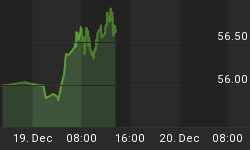The dollar slides across the board, hitting fresh 7-month lows against the euro at $1.2540 after Fed Chairman Bernanke departs from his usual upbeat assessment of the US economy and mulls the need to pause policy tightening in light of recognizing the negative risks of further slowdown in the housing market.
Market expectations of a June rate hike are slashed in half to 30% from yesterday's levels, further prolonging the bond market rally and dollar selloff.
Bernanke opted to depart from simply describing the coincidental economic environment, as did yesterday's upbeat Beige Book, and adopted a cautionary assessment on inflation with a more sobering outlook regarding the rate of expansion in the second half of the year. He has managed to temper the market exaggerated expectations of further rate hikes by reminding markets that the economic data are in charge rather than bond traders.
Fed moves from Greenspan's "froth" to Bernanke's "significant uncertainty" in housing
The fact that the Fed is shifting its housing market assessment from Greenspan's "apparent froth" last August to Bernanke's "significant uncertainty" shows that the Fed has managed to rein in the housing market, to an extent that merits a pause in tightening.
Bernnake's cautiousness is in line with the thinking merging from the March 20 meeting and San Francisco Fed's Janet Yellen remarks mulling the extent of any delayed effect of the 2-year old monetary policy tightening on the US economy and whether there is a need to pause. The fact that the minutes of the March 20 meeting recorded members' concern regarding the risk of overshooting given the existence of policy lags, suggests that rate increase campaign is nearing its end. And today Bernanke confirmed it.
Bernanke hints that pause is no end
The other resounding hint that the Fed is nearing a pause in June is indicated by Bernanke's stating that "the Committee may decide to take no action at one or more meetings in the interest of allowing more time to receive information relevant to the outlook". This is a notable departure from mainly saying the Fed is data dependent and is moving towards the need to pause inorder to better respond to the emerging data.
China's rate hike may imply no revaluation/band increase until Q3
China's decision to raise its interest rates for the second time since 1995 is a signal to the G7 that financial market reform is not all about currency flexibility but also capital market liberalization, thus resorting to market mechanisms of raising the cost of debt instead of "admisintrative" measures.
Unlike in the October 2004 rate hike when the PBOC raised BOTH the lending rate and deposit rates by 27 bps to 5.58% and 2.25% respectively, today's 27-bp hike targeted only the lending rate, which reflects a concrete effort to:
1) improve banks' capitalization/profitabilty;
2) rein in consumer spending an cooling growth.
Since it is unlikely that China will adopt a currency and monetary tightening in the same quarter, we push forward our expectation for a revaluation/band increase to Q3.
Considering China's paramount role in driving up world demand for metals and fuel, the rate hike announcement triggered a downward kneejerk reaction in gold. But the metal is back up to the $640 per ounce after the selloff in the dollar.
Once markets realize the Chinese move mainly consisted of an embryonic tightening that remains far from reigning in China's expansion, we expect the yen to regain its form on the rationale that Japan's exports to China shall remain undaunted.
USDJPY nears the key spport of 113.80 -- 38% retracement of the 101.66-121.36 rise, now paving the way for 113.40.















